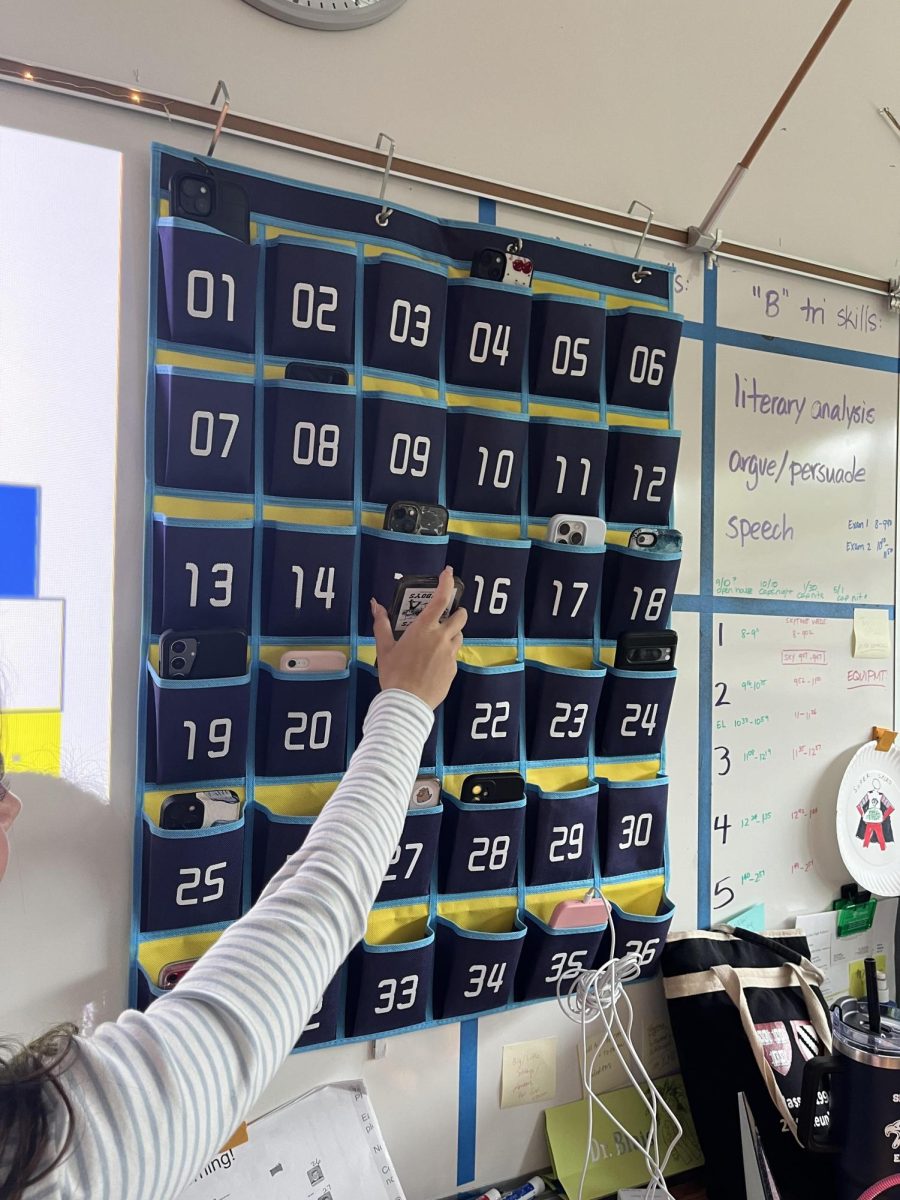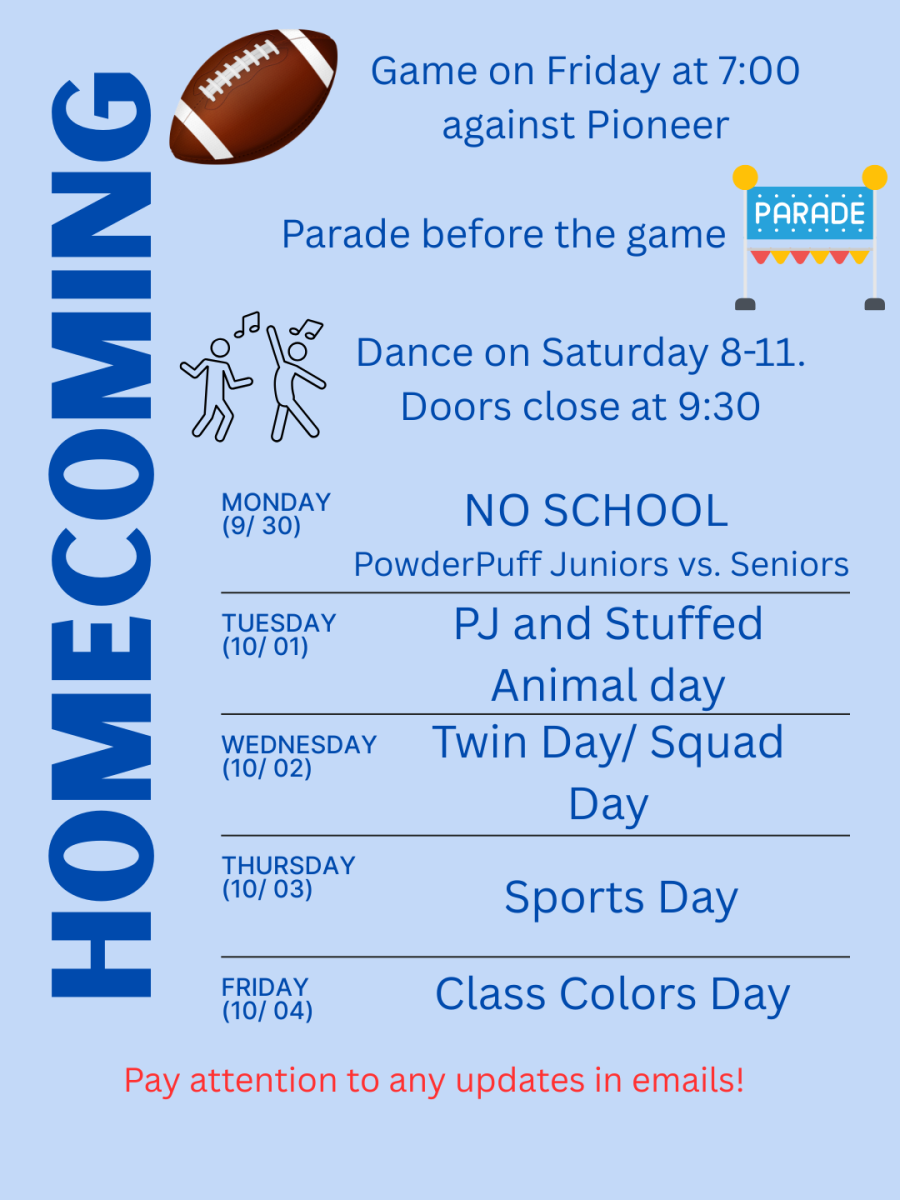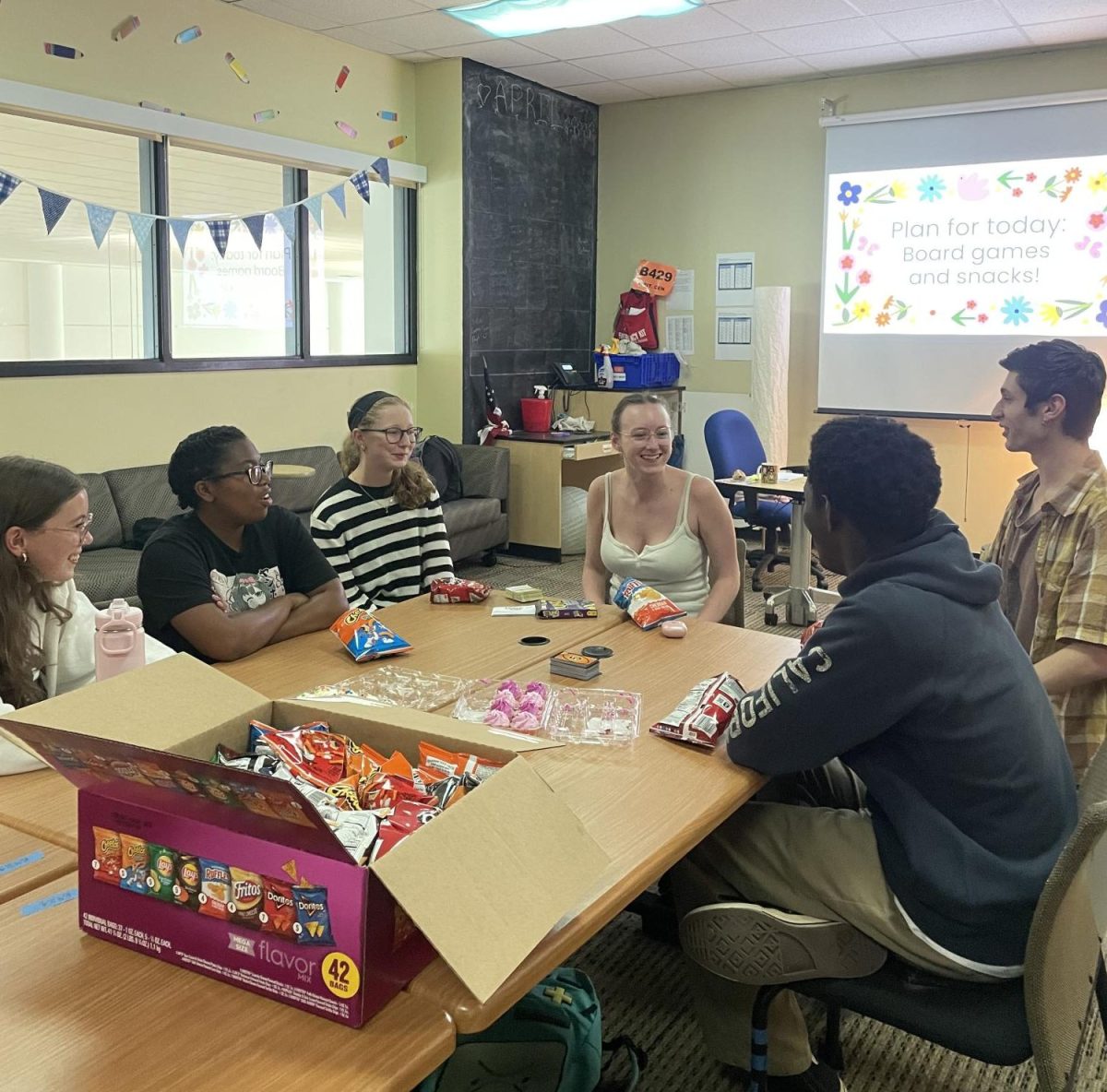The new phone policy has changed the environment of Skyline High School and teachers are noticing a difference. Phones must go in the pocket at the front of the classroom – students may only use their phones during lunch and the five minute passing time. Also, there is no use of headphones or airpods allowed.
The phone policy has made the lives of teachers significantly easier. Some teachers report that they feel less exhausted and frustrated by the end of the day from telling students to constantly put their phones away.
“It also helps the teacher’s mental health because we don’t have to monitor phones as much anymore,” said Diane Sastre, Skyline AP Spanish teacher. ”Students are much more engaged in their classes and not on their screens.”
Concern over students’ mental health was a key factor as to why the phone policy was implemented to begin with. In addition, over the last few years, teachers have noticed a decline in attention span, effort in class, and grades. They associated many of these declines with an increase in social media use.
Some Skyline teachers have noticed that the grades of their students are now improving. The vast majority of Skyline teachers interviewed by The Post have reported significant changes in the learning and attention of Skyline students. “I’m actually seeing students interact with each other,” says Kristen Winter, Skyline AP Psychology teacher. “I don’t believe I became some kind of super teacher overnight. I had the highest scores on the first test this year that I have ever seen.”
From noticing greater engagement in discussions, lectures, and group work, teachers have seen changes in overall social and learning connections in the classroom. “When we’re doing group discussions they’re more present in the moment, which I’ve also been seeing in the labs that we do,” says AP biology teacher Gabriel Rettaliata. ”It’s important to be able to work with your group and communicate. Having that distraction or the temptation of distraction removed has definitely helped.”
One remaining challenge the teachers face when they do give students access to their phones is figuring out how to manage them, ensuring that students are on task and using them for educational purposes. There is some confusion within the student community about when a teacher thinks it’s appropriate to make exceptions to the phone policy. While students may not have their phones at all during classes, there are moments when it is needed for educational purposes.
“I have a couple of students who have asked if they can record my lectures,” says Warner. “As long as they check in with me first and have the phone just lying flat on their desk it’s ok with me. When we go outside, they need to use it to identify species and I also want them to use it even just as a timekeeping device.”
Many teachers will make exceptions for QR codes if their lesson requires it. Games such as Kahoot or Quizlet are also frequent exceptions to the policy.
Journalism students here at The Skyline Post need to have their phones at times. Phones are a powerful tool for journalists, but there are other technology alternatives available without phones. Social media management and sending photos to computers is a regular, short exception. Interviews are actually easier using Google read/write or Otter, which transcribe interviews as they go. Journalism is a cyclical process. Some days are hectic, and other days, writers are waiting for interviews or edits.
“I see more engagement and discussion at tables now,” says Journalism teacher Annie Blais. “Instead of attempted phone use during the down times.”
This shows that Skyline’s students are now more engaged with each other and on their learning rather than on a screen. “In general I don’t really see a lot of reason to be needing a cell phone in class,” says Rettaliata. “I speak from personal experience through school not having a smartphone, and I survived. I think present-day students are equally capable of survival.”
There is not enough information yet to tell if the phone policy has impacted students’ grades.
Read about Skyline students’ points of view here.








